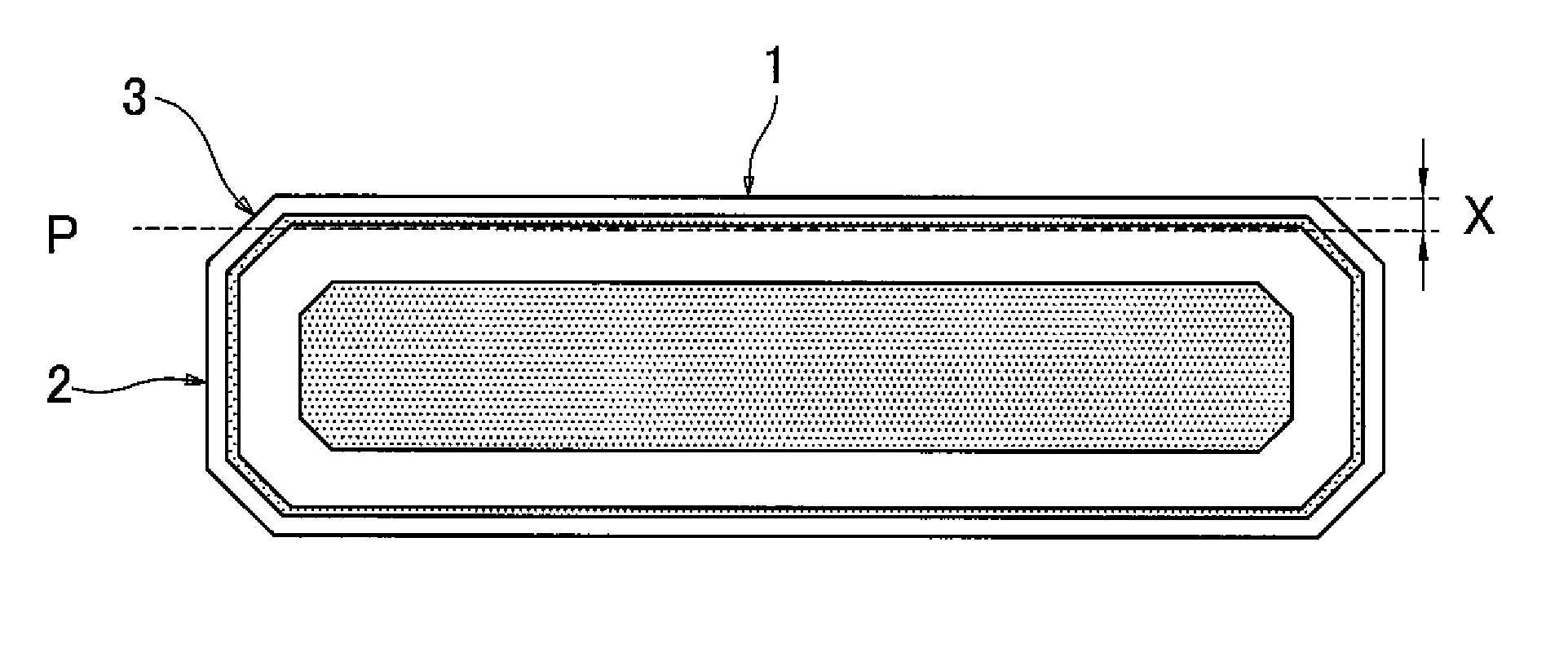Silicon wafer and method for manufacturing the same
- Summary
- Abstract
- Description
- Claims
- Application Information
AI Technical Summary
Benefits of technology
Problems solved by technology
Method used
Image
Examples
Embodiment Construction
[0026]Now the present invention is described in a detailed manner. The method of manufacturing a silicon wafer according to the present invention includes the step of subjecting a silicon wafer sliced from a silicon single-crystal ingot grown by the Czochralski process to a predetermined RTP, and the below-described predetermined removal step. By performing the RTP and then the removal step, crystal defects decrease in the device region of the completed silicon wafer, and oxygen precipitation nuclei in the bulk portion of the completed silicon wafer are uniformly arranged in the radial direction of the surface of the wafer.
[0027]During the RTP, which is performed in an oxygen-containing atmosphere, the wafer is heated to a maximum temperature within a range of 1300 to 1380° C., and kept at the maximum temperature for 5 to 60 seconds. By performing such RTP, it is possible to effectively eliminate COPs and oxygen precipitation nuclei that have been produced during growth of the silic...
PUM
| Property | Measurement | Unit |
|---|---|---|
| Temperature | aaaaa | aaaaa |
| Temperature | aaaaa | aaaaa |
| Length | aaaaa | aaaaa |
Abstract
Description
Claims
Application Information
 Login to View More
Login to View More - R&D
- Intellectual Property
- Life Sciences
- Materials
- Tech Scout
- Unparalleled Data Quality
- Higher Quality Content
- 60% Fewer Hallucinations
Browse by: Latest US Patents, China's latest patents, Technical Efficacy Thesaurus, Application Domain, Technology Topic, Popular Technical Reports.
© 2025 PatSnap. All rights reserved.Legal|Privacy policy|Modern Slavery Act Transparency Statement|Sitemap|About US| Contact US: help@patsnap.com


